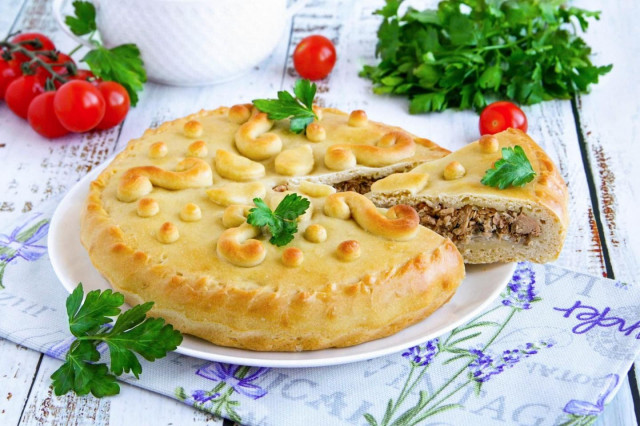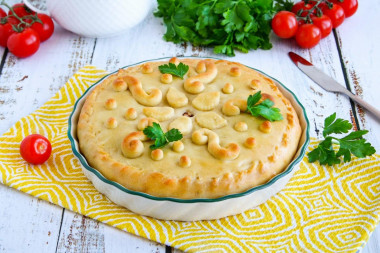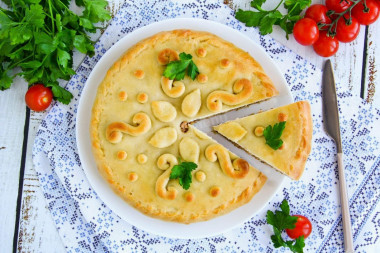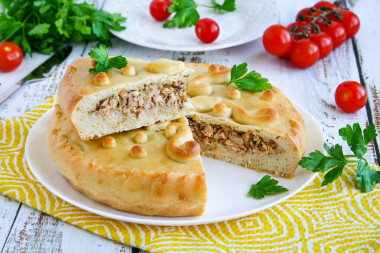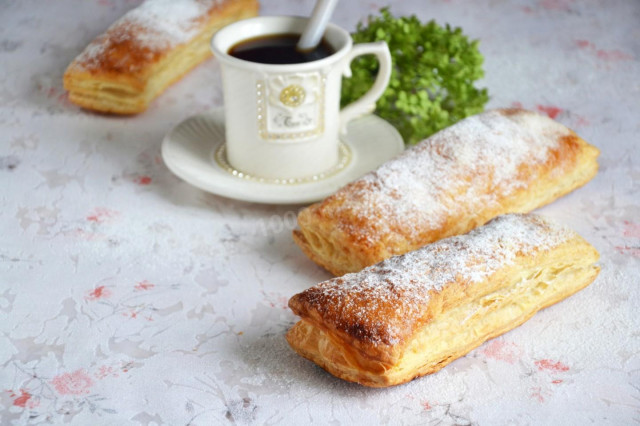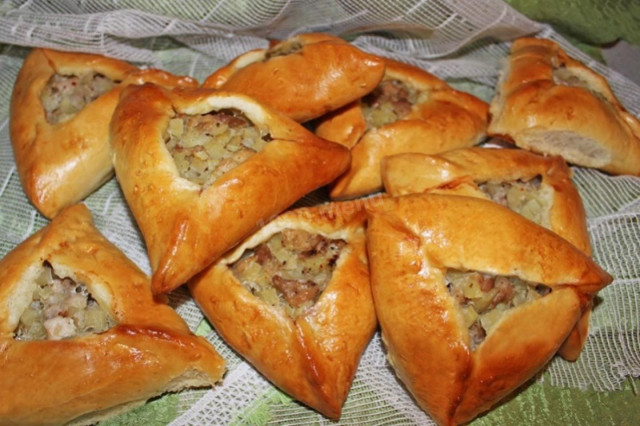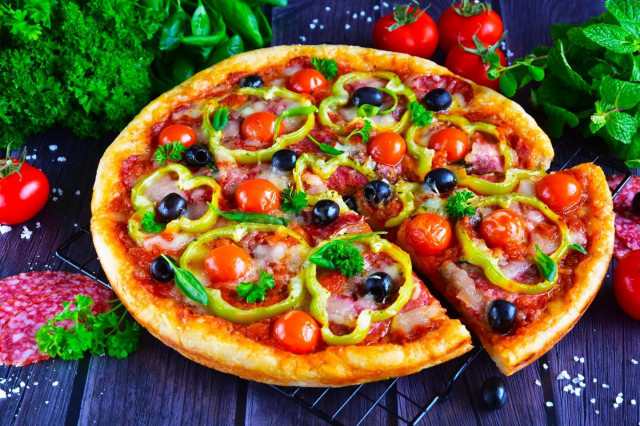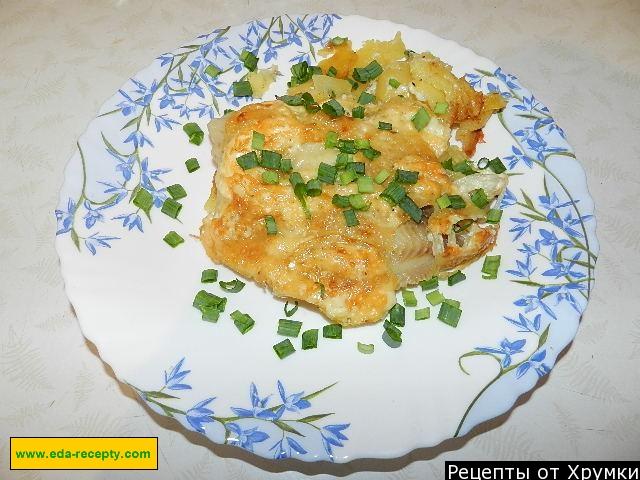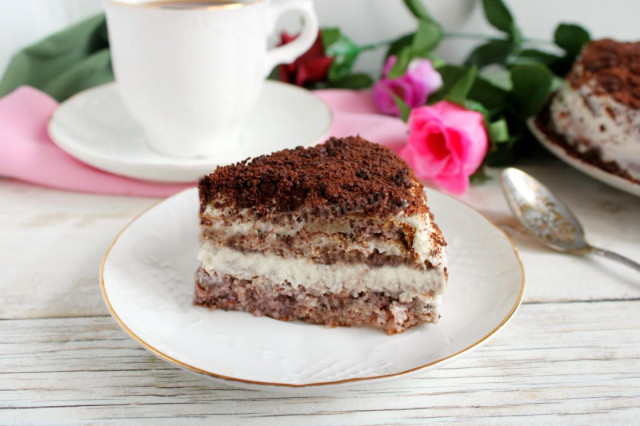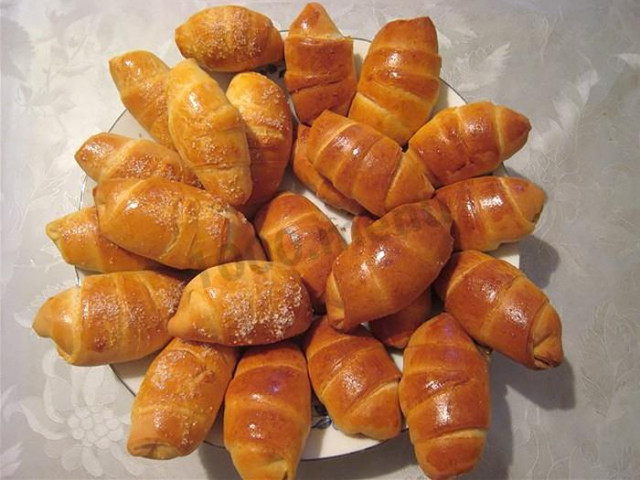Composition / ingredients
Step-by-step cooking
Step 1:
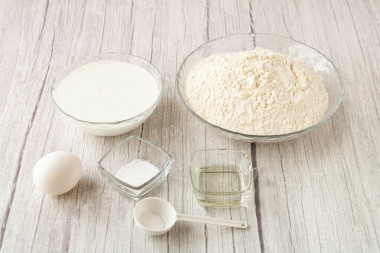
How to make a pie with canned pink salmon? Measure out the necessary ingredients for the dough. Instead of kefir, you can take ryazhenka or varenets. Remove the fermented milk product from the refrigerator in advance so that it is not cold. Use odorless vegetable oil.
Step 2:
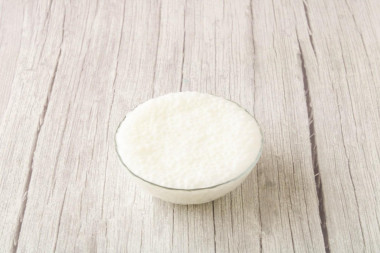
Combine kefir with soda, mix. Leave for a few minutes until numerous bubbles appear on the surface. This is the reaction of soda with lactic acid.
Step 3:
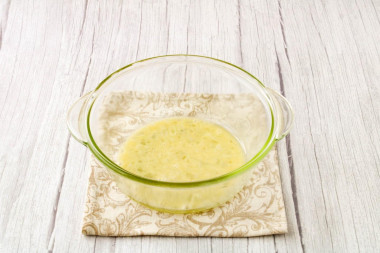
Beat the egg until smooth. Separate a little beaten egg to lubricate the pie on top (about an incomplete tablespoon).
Step 4:
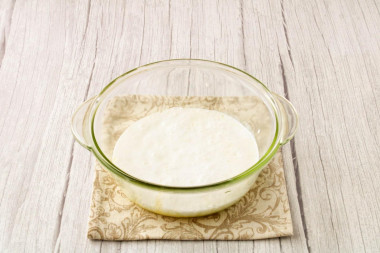
Pour kefir with soda, mix.
Step 5:
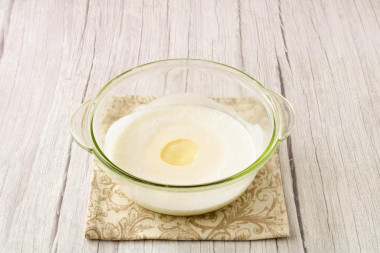
Add salt and vegetable oil, mix.
Step 6:
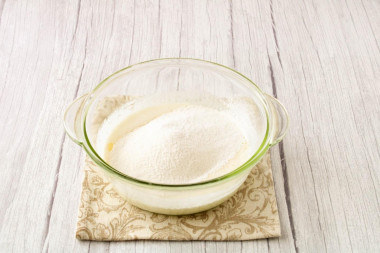
Pour flour into the resulting mass, sifting it through a sieve, mix.Sifting will enrich the flour with oxygen, and the dough will rise better during baking. Flour may need less than the specified amount. Therefore, do not pour out all the flour at once, so that the dough does not turn out too tight.
Step 7:
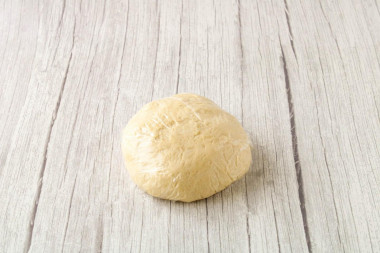
Add the rest of the flour if necessary, kneading the dough with your hands. The dough turns out tender and soft. It stuck to my hands quite a bit, but I didn't add any more flour to make the pie more tender. Wrap the dough in plastic wrap and leave on the table for 20 minutes.
Step 8:
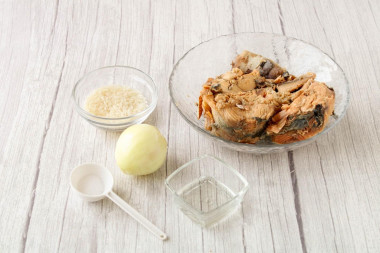
While the dough is "resting", prepare the filling. Remove the pink salmon from the jar so that the excess liquid runs off.
Step 9:
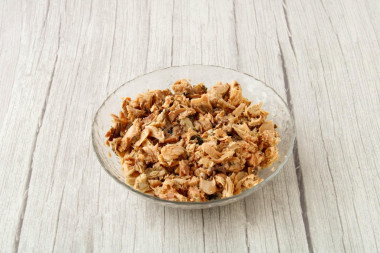
Remove the large bones from the canned fish. Mash the fish with a fork or divide into small pieces.
Step 10:
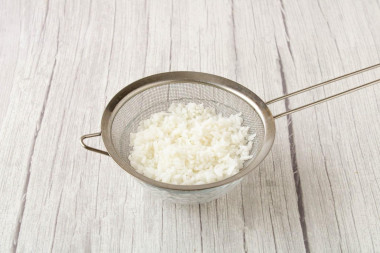
Boil rice in boiling salted water until tender. Flip the rice onto a sieve to drain the water. If you want the rice layer to be larger, increase its amount.
Step 11:
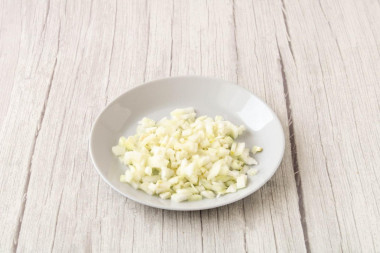
Wash pre-peeled onions, cut into small cubes.
Step 12:
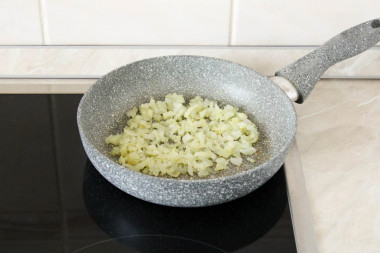
In a frying pan with the addition of vegetable oil, fry the onion, stirring occasionally, until soft and golden.
Step 13:
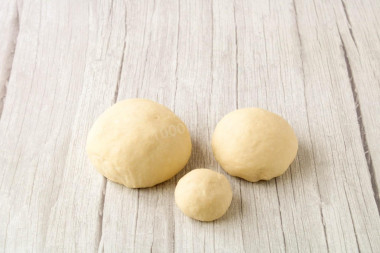
"Rested" dough will become more elastic, pliable and obedient. Divide it into 3 parts. Bigger - for the base of the pie, smaller - for the top. I left quite a bit of dough for decoration (this is optional).
Step 14:
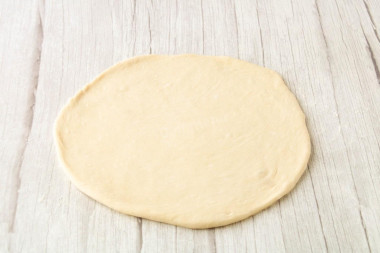
Roll out most of the dough on a floured table into a round layer slightly larger than the diameter of the baking dish.
Step 15:
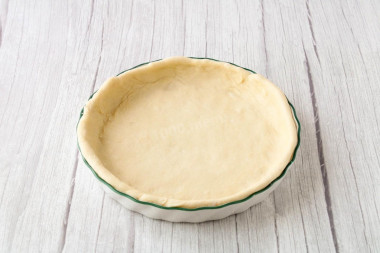
Grease the mold with vegetable oil. Transfer the rolled dough to the mold, spread it on the bottom and sides. I have a mold diameter of 23 cm .
Step 16:
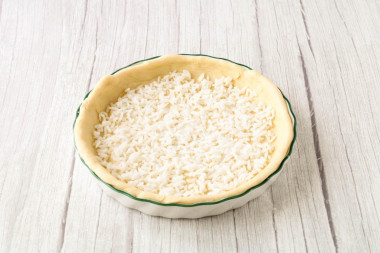
Put a layer of boiled rice on the bottom.
Step 17:
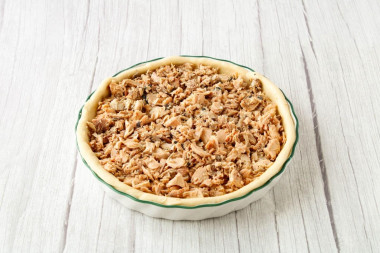
Spread the canned pink salmon on top.
Step 18:
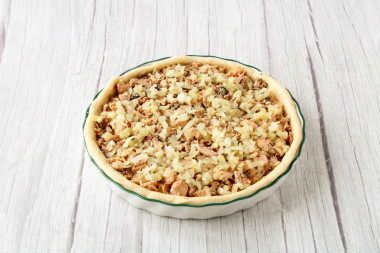
Spread the fried onions on the fish.
Step 19:
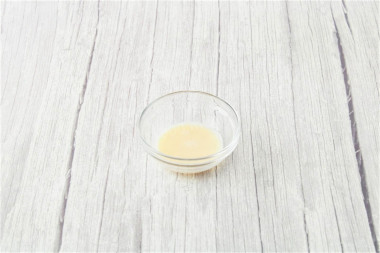
Combine the beaten egg left with 1 tsp of milk, mix.
Step 20:
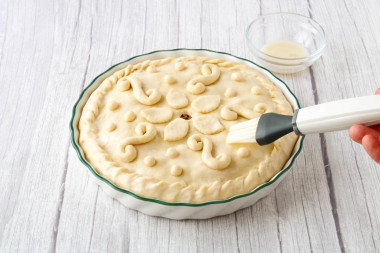
Roll out the second part of the dough in the same way as the first, put it on top of the filling. Connect the edges of the dough well. In the center of the pie, make a small hole for steam to escape. If desired, decorate the pie with various figures from a small piece of dough. Using a cooking brush, brush the top of the pie with egg mixture.
Step 21:
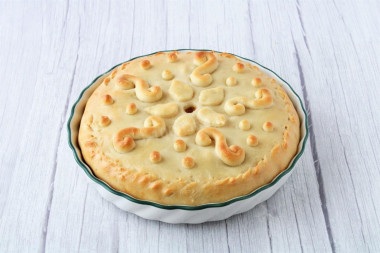
Bake the pie with canned pink salmon in a preheated 180 C oven for 30-40 minutes until lightly browned. Do not brown it too much, then it will be softer and more tender. If the top of the pie has started to blush prematurely, cover it with a layer of foil. The baking mode and cooking time may be different. Take into account the peculiarities of your oven. Cool the finished cake a little and remove it from the mold.
Step 22:
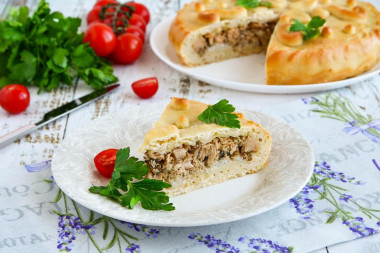
Cut the pie into pieces and serve. Enjoy your meal!
Keep in mind that everyone's ovens are different. The temperature and cooking time may differ from those specified in the recipe. To make any baked dish successful, use the useful information about the features of ovens !
So that the oven has time to heat up to the desired temperature, turn it on in advance (10-20 minutes before the start of cooking).
Any heat-resistant form is suitable for this recipe. If you use a silicone mold, then you do not need to smear it with butter or margarine. But it is better to lightly lubricate metal, ceramic or glass dishes with vegetable oil so that the baking does not burn.
Caloric content of the products possible in the composition of the dish
- Chicken egg - 157 kcal/100g
- Egg white - 45 kcal/100g
- Egg powder - 542 kcal/100g
- Egg yolk - 352 kcal/100g
- Ostrich egg - 118 kcal/100g
- Raw wild rice - 353 kcal/100g
- Brown raw rice - 360 kcal/100g
- Boiled brown rice - 119 kcal/100g
- White fortified raw rice - 363 kcal/100g
- White fortified boiled rice - 109 kcal/100g
- White rice, steamed, with long grains raw - 369 kcal/100g
- Steamed white rice, boiled with long grains - 106 kcal/100g
- Instant dry rice - 374 kcal/100g
- Instant rice, ready to eat - 109 kcal/100g
- Fig - 344 kcal/100g
- Kefir fat - 62 kcal/100g
- Kefir of 1% fat content - 38 kcal/100g
- Low-fat kefir - 30 kcal/100g
- Kefir "doctor beefy" 1,8% fat content - 45 kcal/100g
- Kefir 2.5% fat content - 53 kcal/100g
- Vegetable oil - 873 kcal/100g
- Salt - 0 kcal/100g
- Onion - 41 kcal/100g
- Wheat flour - 325 kcal/100g
- Baking soda - 0 kcal/100g
- Canned pink salmon - 136 kcal/100g

